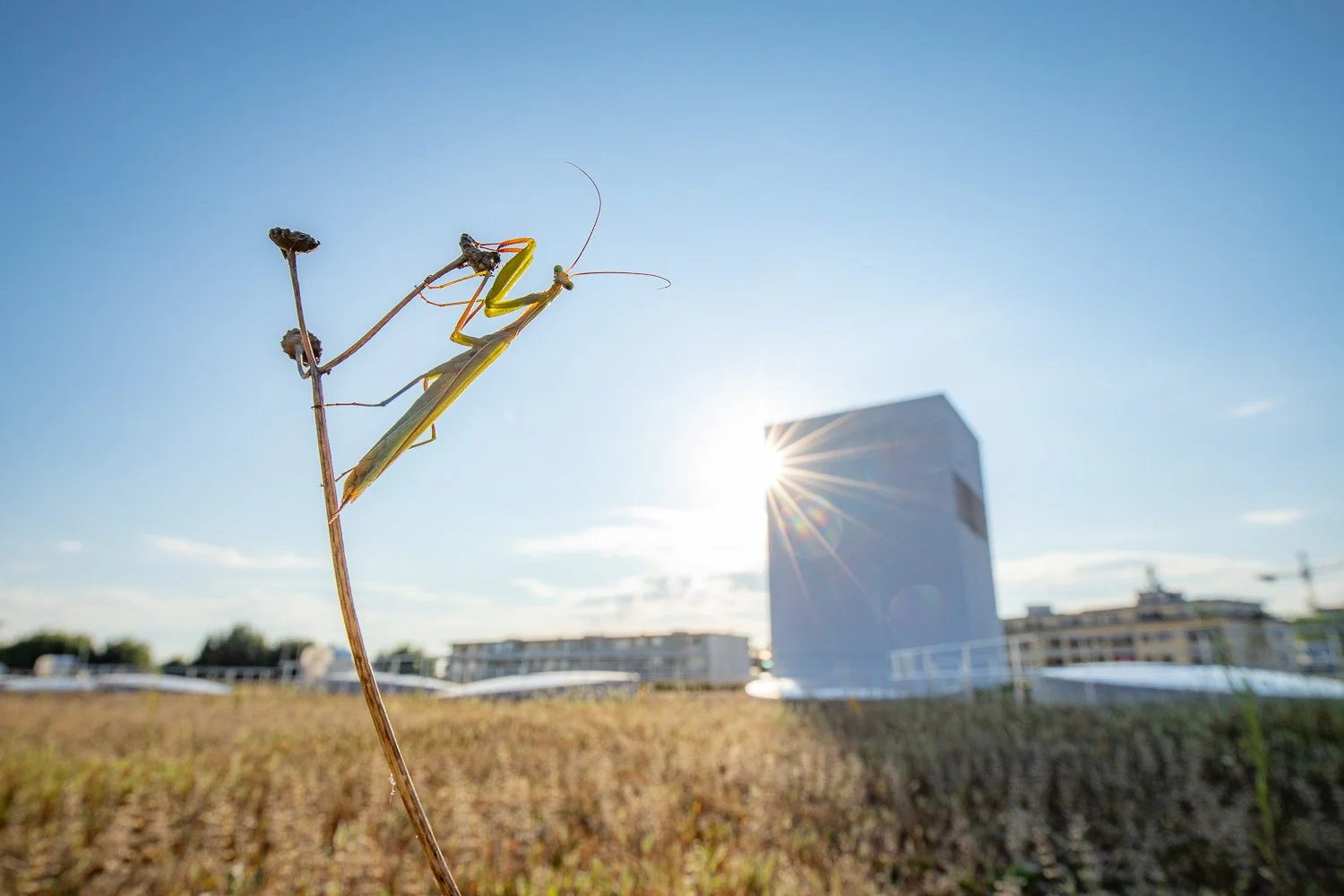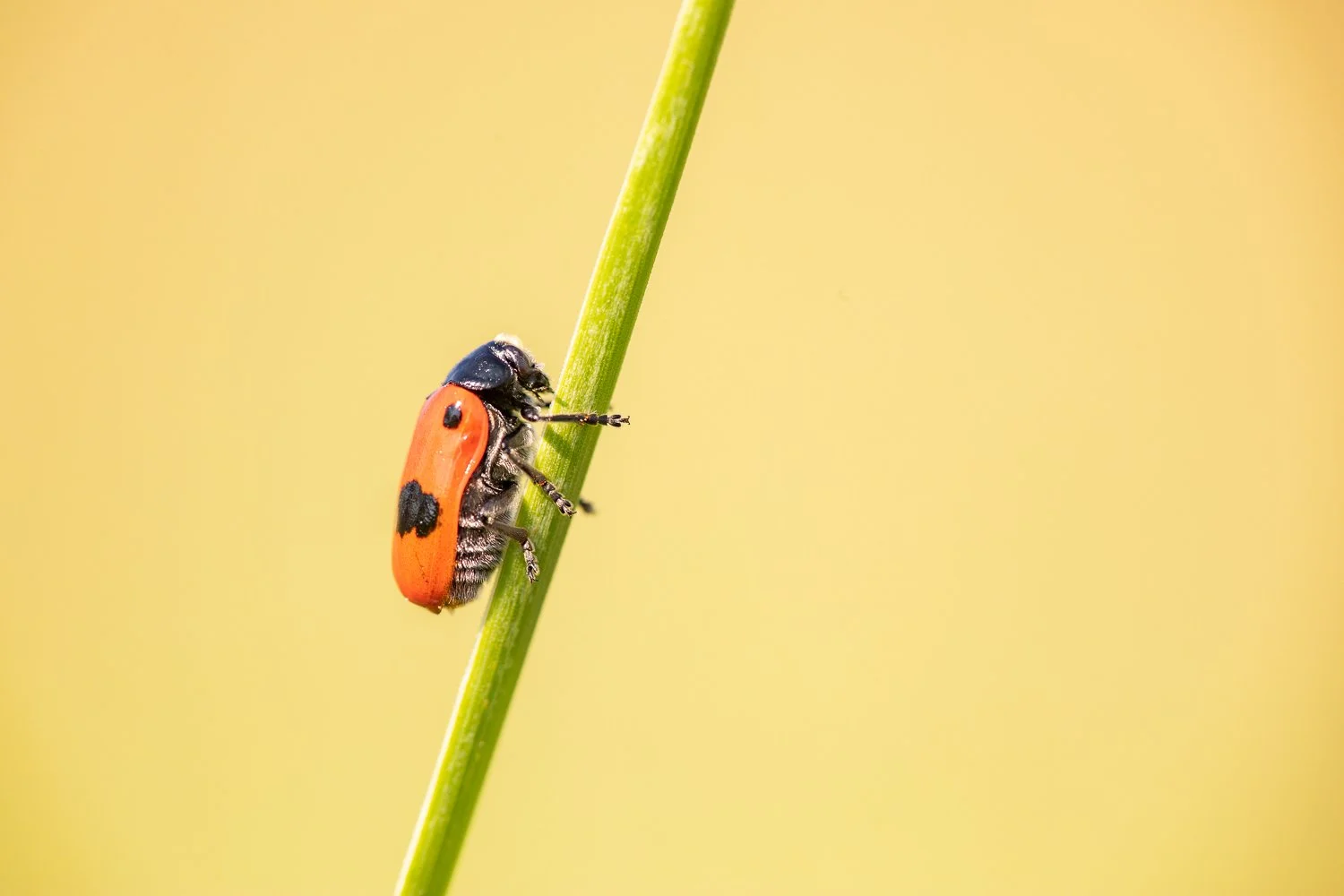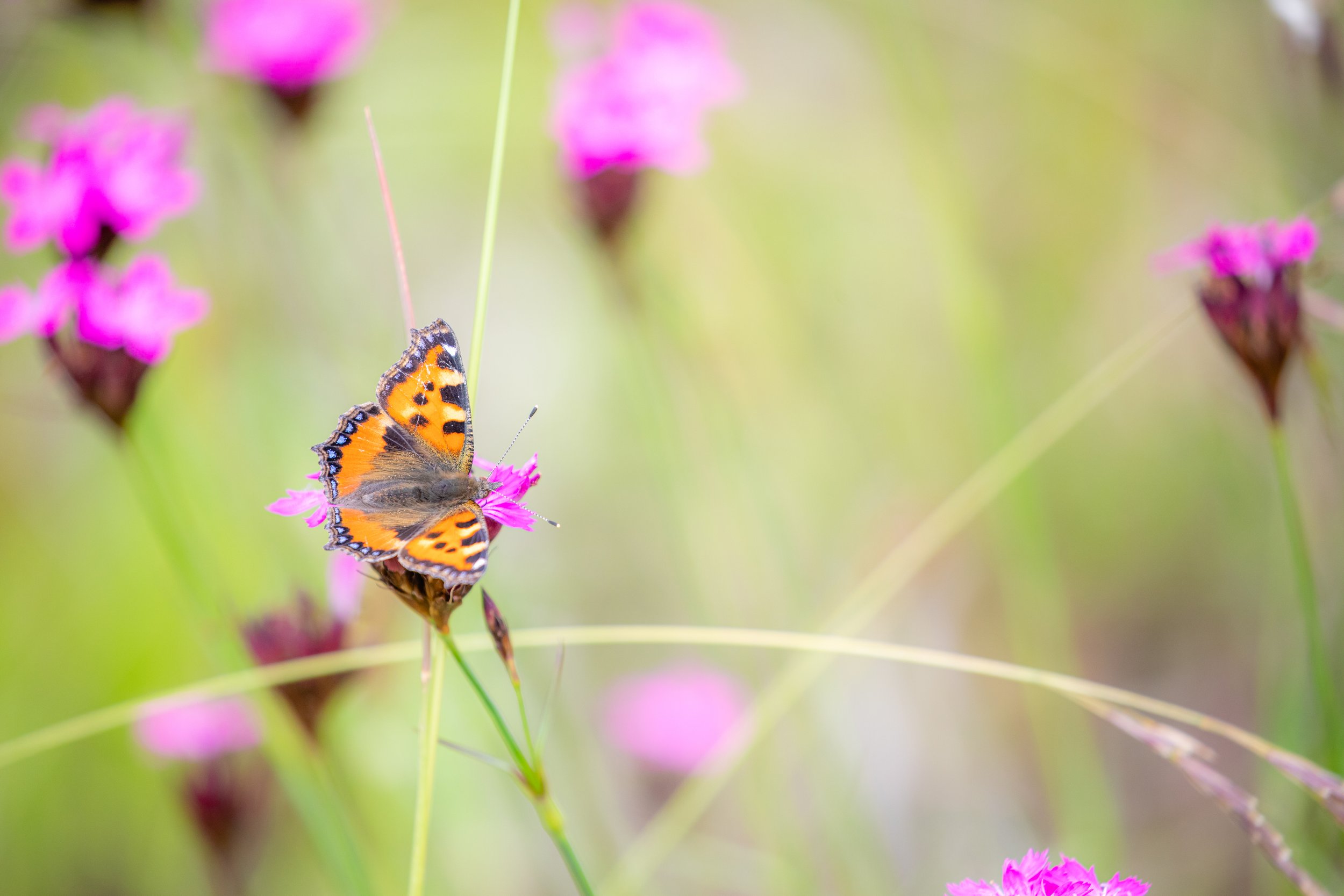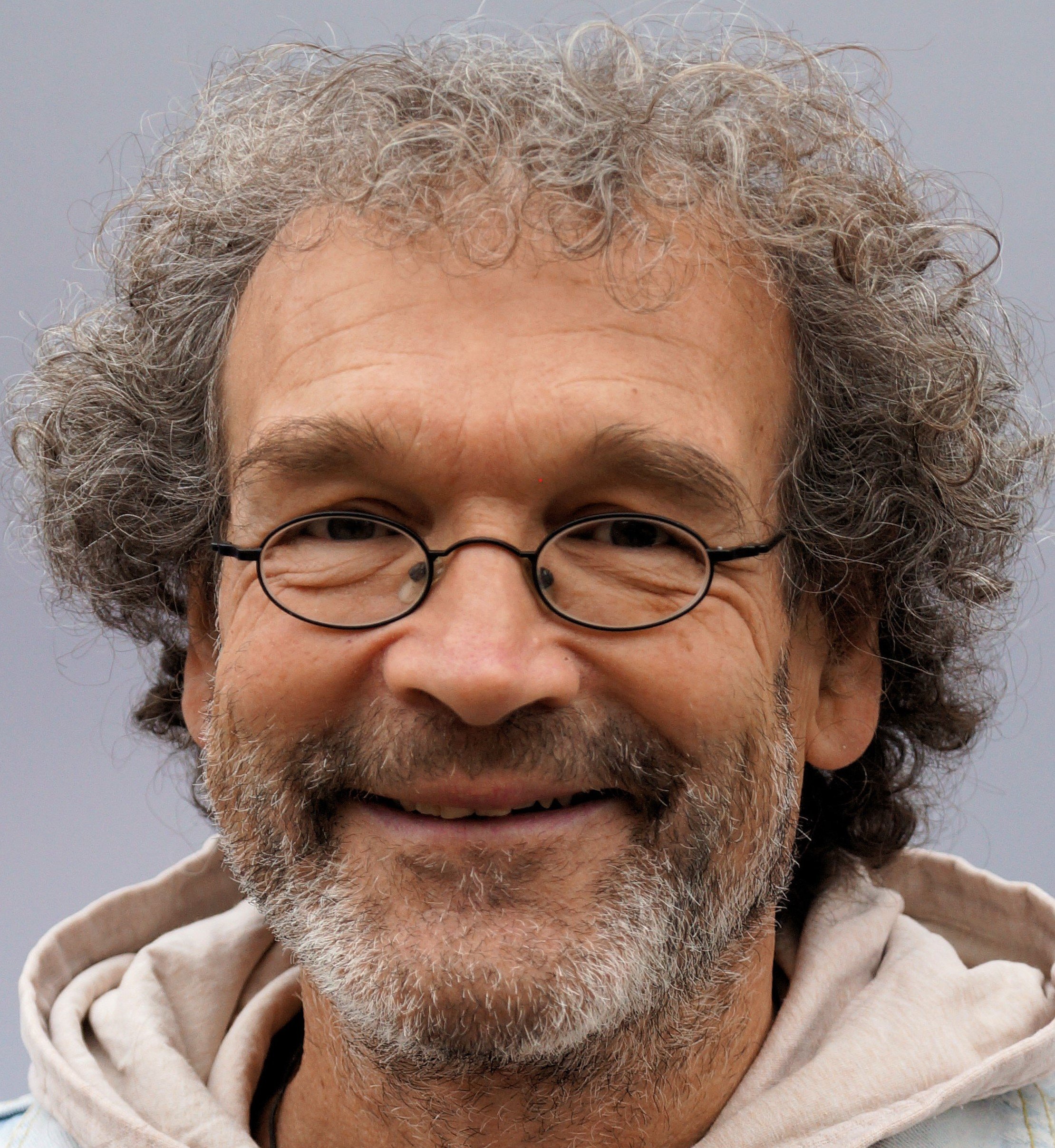On the Roof With The Father of Green Roof Biodiversity Research
Advertisement
A praying mantis (Mantis religiosa) on Basel’s biggest green roof on Stücki Shopping mall, hosting 13 grasshopper species in different substrate and vegetation niches. Photo: Andreas Hofstetter
Dr. Stephan Brenneisen, is the ‘father’ of green roofs and biodiversity, having conducted research and led advocacy on this subject for more than 25 years. Dr. Brenneisen is the Head of Research Group, Urban Ecology, Zurich University of Applied Sciences. His initial research focus was on beetles and spiders and he has been instrumental in shaping green roof policy in Basel, Switzerland so that it is focused primarily on biodiversity. I, (Steven Peck), had the pleasure of touring green roofs in Switzerland with Stephan about 15 years ago and was amazed to discover the wide range of species, including some on the red list, that can make green roofs their home. It was a pleasure to reconnect with Stephan in this, On The Roof With … Dr. Stephan Brenneisen.
Advertisement
Beetles live in and from different vegetation structures. Other beetle species live on the green roof surface, many of them carnivorous, indicating in total as a species community the potential of green roofs for urban biodiversity. Photo: Andreas Hofstetter
LAM: Stephan. Thanks for taking this interview with me. Let’s start with why did you focus your research on biodiversity and green roofs - what was your motivation?
Stephan Brenneisen (SB): There are many roof spaces that can be colonized by hundreds of species from nature and I realized that it is possible to optimize this through research. People also get really fascinated when they find biodiversity on rooftops, which allays concerns about costs and builds support.
LAM: How can designers improve the biodiversity on their green roof projects?
SB: They should think about the biomass they want for their roof. A meadow will take more growing media, for example, than a lightweight sedum based extensive green roof. Meadow habitats are semi-intensive green roofs, with around 12 centimeters of substrate. Try to get a meadow without having to mow the roof, which is an expensive maintenance requirement and influences the natural succession. There should also be a combination of open spaces (pioneering prairie) still sparsely vegetated, and more vegetation dense meadowlands if possible.
LAM: How has your research on biodiversity translated into policy in Basel, and more broadly in Switzerland?
SB: The green roof policy in Basel is designed primarily to support biodiversity, but of course this also includes stormwater management, reductions in the urban heat island etc. The minimum green roof depth in the Basel green roof by-law is 12 centimeters of growing medium. The substrate thickness must also be varied in depth across the roof surface, some places having 15 centimeters and others less than 12. This facilitates plant and animal diversity. Green roofs must use native plants, and a special, locally sourced substrate mix. All new buildings must cover 100 per cent of the area, less technical requirements for HVAC etc. We conducted a survey and found that the average is about 70 per cent coverage. No irrigation systems are required.
In Basel, almost 50 per cent of all the flat roofs have green roof systems. For the past 10 years buildings undergoing a major retrofit have to put a green roof as well and this has helped accelerate adoption. See the full policy here.
Advertisement
“ In Basel, almost 50 per cent of all the flat roofs have green roof systems.”
Green roof of Basel University hospital showing and symbolising how different substrate types and thickness of the growing medium will drive succession to a multi diverse habitat with different vegetation structures and therefore living spaces for various animal species of pioneer and meadow habitats. Photo: Andreas Hofstetter
In Basel, these requirements may change in order to adapt to climate change. Irrigation systems may be required in order to help reduce the urban heat island impact and minimum depths adjusted to 15 cm in order to improve plant survival.
As for Switzerland, Zurich is close to adopting similar green roof policies. Lausanne has green roof policies similar to Basel, for new buildings as do other communities.
LAM: Do you see biodiversity as a market driver for green roofs and if so where? Which markets?
SB: Biodiversity is a market driver if you can touch the minds of the people. Now, climate adaptation is the big issue everyone is talking about. Did you know that insect populations have dropped by 50 per cent over the past 20 years across Europe. This is also a big concern. Studies in Germany have shown that populations of insects have dropped as have studies on dead insects on car grills. When you drive you sample insects, and the number of dead insects on cars has fallen. Bugs-Matter-2021-National-Report.pdf (buglife.org.uk)
Biodiversity is not much of a driver with green walls. Some studies have been done on birds and insects but the aesthetics are the best driver for green walls.
LAM: How important do you think 'corridors' of green roofs and walls are for biodiversity?
SB: I don’t like the corridor argument for green roofs. This is because animals we find on green roofs are highly mobile species so they don’t require corridors. Green roofs don’t have to be stepping stones to support biodiversity, depending on their size they serve as permanent habitats for several insects, spiders etc. Green roofs can improve the habitat mosaic of birds and butterflies providing feeding or nesting sites. The perspective of permanent habitats lets us consider how much space populations of certain insects may need for survival: for example, there is a minimum green roof area for grasshoppers, to have a stable population. It is approximately 500 to 1000 square meters of green roof meadow. Grasshoppers are a good indicator species that demonstrate a healthy meadow ecosystem. Butterflies may be a better selling point for green roofs than grasshoppers. More research on the needs of different species is still needed.
Advertisement
LAM: What is your future research focused on?
SB: We are now trying to understand the changes in the ecosystem due to climate change and its impact on species diversity. Is climate change reducing species diversity or can they adapt? Can the green roof species survive three months of drought in the summer? Have we moved to a different climate zone in Switzerland, more like Italy now? We have been identifying red listed species that exist on green roofs in different countries. Red listed species of beetle such as Elaphropus quadrisignatus have recently been found on green roofs in Hamburg.
Small Tortoiseshell (Aglais urticae) a butterfly species on the green roof of Roger Federers home stadium, the St. Jakobshalle in Müchenstein/Basel. Photo: Andreas Hofstetter
LAM: How does ecological restoration on green roofs contribute to the larger issue of conservation world wide? Is there a connection?
SB: World wide conservation needs us to help keep species alive and preserve habitat – it’s a question of their ongoing evolution which requires focused effort and resources. We can’t do that in urban areas. We can however, demonstrate the value of conserving red listed species to people in urban areas and educate them about biodiversity.
While we need to give roof spaces back to nature, this won’t necessarily help with global conservation efforts, which are on a different scale, and are different in different countries. For example, Switzerland has 300,000 breeding pairs of black redstarts, which are rare and protected in England.
Authorities should understand that the tops of buildings should be used for climate adaptation and to bring nature to our cities. For a reasonable price, we can make simple and effective roofs that are good for people and nature. We have clearly demonstrated this in Switzerland.
Advertisement
Dr. Stephan Brenneisen, is the Head of Research Group, Urban Ecology, Zurich University of Applied Sciences. He can be reached here.
More Information
Urban Ecology, Zurich University
How Basel, Switzerland Jumpstarted a Green Roof Revolution in Europe









